
table of contents
- Types from A - F
- Types of G - K
- Types of L - O
- Types from P - Z
- frequently asked Questions
Butterflies (Lepidoptera) are the most species-rich insect order. However, they can almost always be clearly identified via their caterpillars (larval stage). Below is an overview of the common caterpillars in June.
In a nutshell
- Caterpillars are the larvae of butterflies before they pupate
- are very voracious and nibble on the flowers, twigs, leaves and sometimes the roots of their forage plants
- pupate after a while
- The butterflies later hatch from the pupae, which are very important for pollinating many flowers
- a very dangerous caterpillar in Central Europe is, for example, that of the
Oak processionary moths
Types from A - F
Blackberry Moth (Macrothylacia rubi)
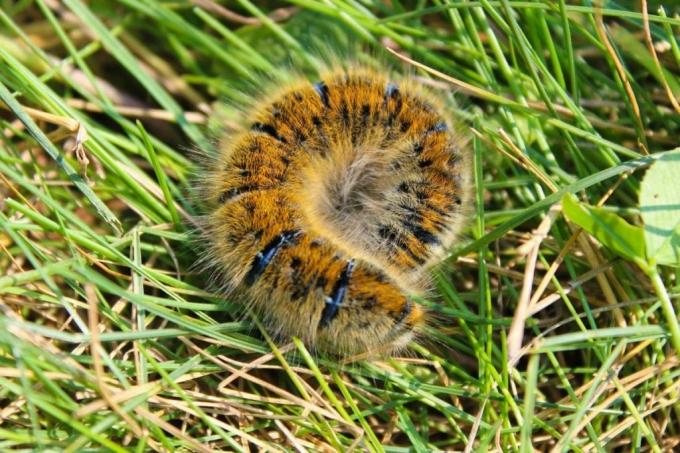
- Appearance: initially velvety black hairs, gently streaked with gray with bright orange segment incisions, later black to red-brown in color
- Length: 80 millimeters
- Habitat: in open, both moist and dry areas in almost all of Europe as far as Central Asia, for example in moors, dry grasslands, meadows at the edges of forests and embankments
- Food: in addition to blackberries, raspberries, sloe, gorse, small meadow button, vetches, ribwort, but also clover
- the butterflies hatch the following May
- Pupation in webs
Erlene owl (Acronicta alni)
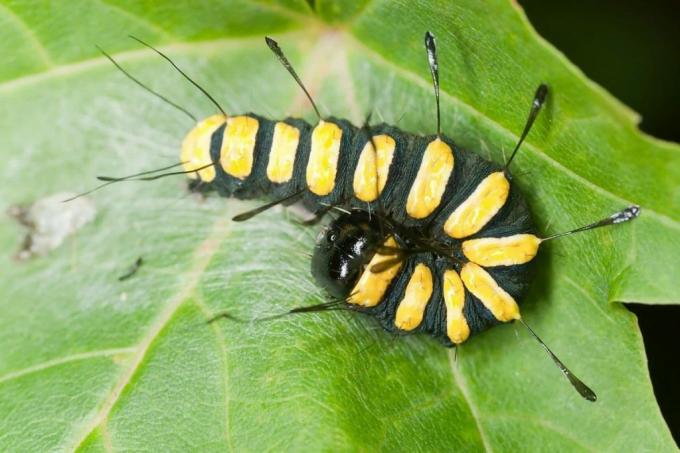
- scientific name:
- Appearance: initially black in the front area and whitish at the end, later black with bright yellow cross bars
- Length: up to a maximum of 35 millimeters
- Habitat: in Germany widespread in areas where alders grow, but also on open orchards and in bushes and hedges
- Food: all alder species and sometimes other deciduous trees such as poplars, elms and hornbeams
- the butterflies hatch from May to June of the following year
Oak processionary moth (Thaumetopoea processionea)
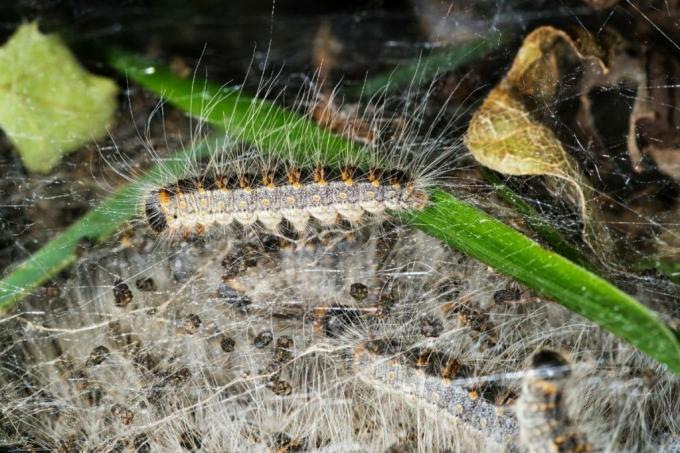
- Appearance: dark, broad topline with long hairy red-brown warts and areas with velvety hair
- Length: up to a maximum of 50 millimeters
- Habitat: Flat land in oak-rich forests, preferably in light and dry places and sometimes on street trees
- Lining: oak
- The hatching time of the butterflies is in August, beginning of September
- form webs in which they shed their skin
Attention: The caterpillars develop from their 3rd Stage stinging hairs with barbs. They contain a nettle poison called thaumetopoein, which can cause caterpillar dermatitis in humans.
Types of G - K
Great frostworm (Erannis defoliaria)
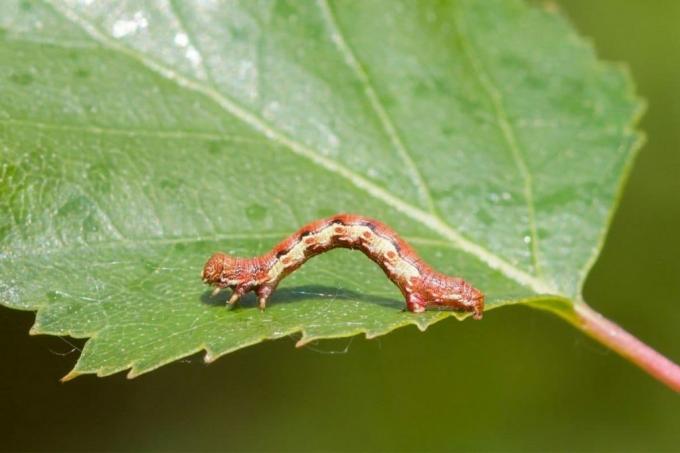
- Appearance: various, mostly red-brown, yellow-brown or black-brown on the back with wide yellow stripes with a black border on top
- Length: 32 millimeters
- Habitat: in deciduous forests, parks, bushes and orchards
- Lining: beech, birch, oak, hornbeam, linden and elm
- the butterflies hatch from the end of September
- pupate in a loose web on the ground
Big fox (Aglais polychloros)

- Appearance: dark gray, almost black in color with orange bands on the sides and on the back and orange-colored, branched thorn outgrowths
- Length: 45 millimeters
- Habitat: light forests, parks, orchards, wooded warm river valleys, vineyards with dry stone walls
- Forage: deciduous trees such as quivering aspen, elm, willow, pear and cherry trees
- The butterflies hatch at the end of June and beginning of July
Little Frostworm (Operophtera brumata)
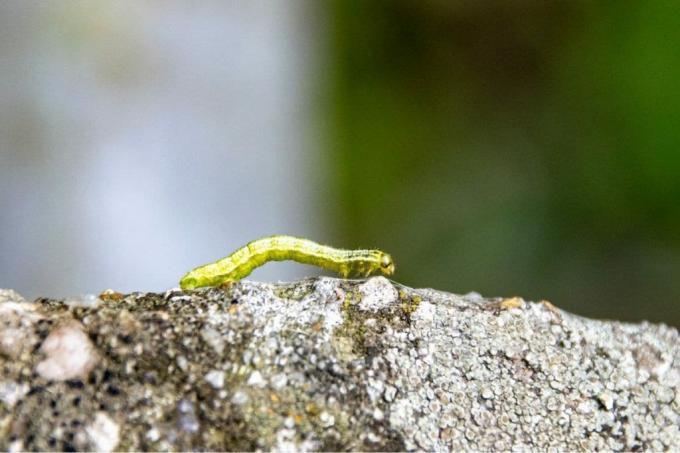
- Appearance: inconspicuous, colored green
- Length: 6 to 8 millimeters
- Habitat: occur in Europe in a wide variety of biotopes when there are deciduous trees
- Food: almost all deciduous trees, including fruit trees
- the butterflies hatch October to December
- form webs in buds and between leaves
Little Fox (Aglais urticae, Syn.: Nymphalis urticae)
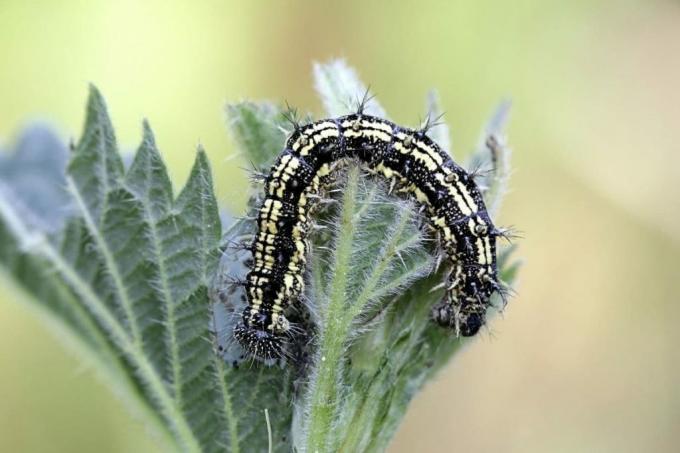
- Appearance: black-brown basic color with tufts of bristles and double, yellowish longitudinal bands on the back
- Length: 22 to 30 millimeters
- Habitat: occurs in the whole of Europe as well as in Asia in the mountains (up to 3000 meters above sea level) as well as in the lowlands
- Food: only large nettle
- The butterflies hatch from May of the following year
- live in webs until the last molt
Mullein Monk (Cucullia verbasci)

- Appearance: yellowish to greenish-white basic color with bright yellow cross bars on the segments and many black spots and dots
- Length: up to 50 millimeters
- Habitat: in north-west Africa and almost all of Europe in ruderal fields and gardens with stocks of forage plants
- Lining: all types of mullein
- the butterflies hatch in late spring the following year
Types of L - O
Linden Hawk (Mimas tiliae)
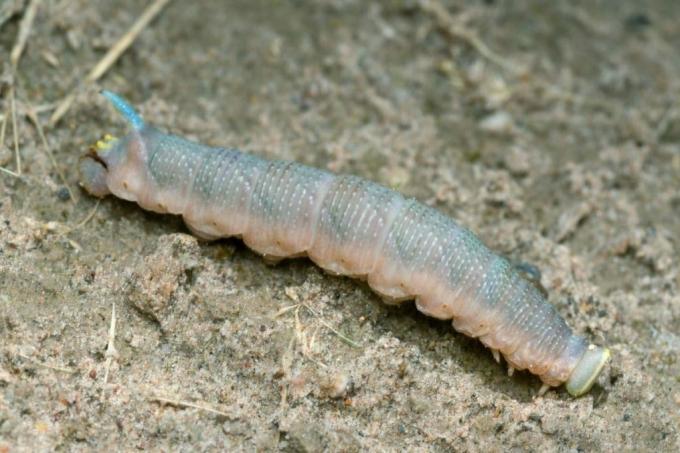
- Appearance: initially pale green, later green or blue-gray
- Length: 55 to 65 millimeters
- Habitat: except for a few southern parts, widespread everywhere in Europe in moist mountain slopes and open river valleys with stands of linden trees
- Lining: mainly linden, but also other deciduous trees
- the butterflies hatch in May to June of the following year
Evening primrose hawk (Proserpinus proserpina)

- Appearance: light green, beige-brown to black-brown basic color with dark spots on the back, yellow spots on the end and dark stripes or spots on the flanks
- Length: 60 millimeters
- Habitat: widespread in southern and central Europe in climatically favored places with humidity
- Lining: all kinds of evening primrose and fireweed
- The butterflies hatch from mid-April in the following year
Middle Wine Hawk (Deilephila elpenor)
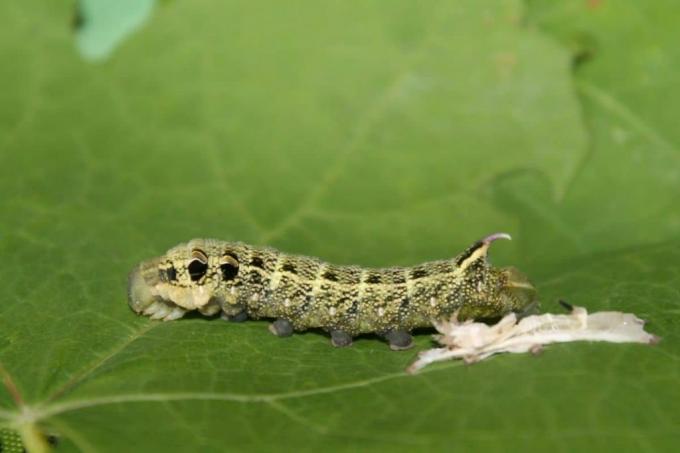
- Appearance: initially green, later brownish to black-brown in color
- Length: 80 millimeters
- Habitat: in all of Europe, except in the north, in settlement areas, gardens and riparian forests
- Food: mainly willowherb, purple loosestrife, fuchsias and evening primrose
- the butterflies hatch from May in the following year
Types from P - Z
Plum moth (Yponomeuta padella)

- Appearance: yellowish to green in color with black spots, dark legs and head capsule
- Length: 15 to 22 millimeters
- Habitat: in all biotopes in Europe as well as in the former Soviet Union in which their food plants occur
- Lining: blackthorn, Plum trees and grooved hawthorn
- the hatching time of the butterflies is July
- appear in groups and form webs
Tip: Cutting off the branches infested with webs and caterpillars is the most effective method against the plum web moth. To do this, however, you have to recognize the webs in good time.
Peacock butterfly (Aglais io, Syn.: Inachis io, Nymphalis io)
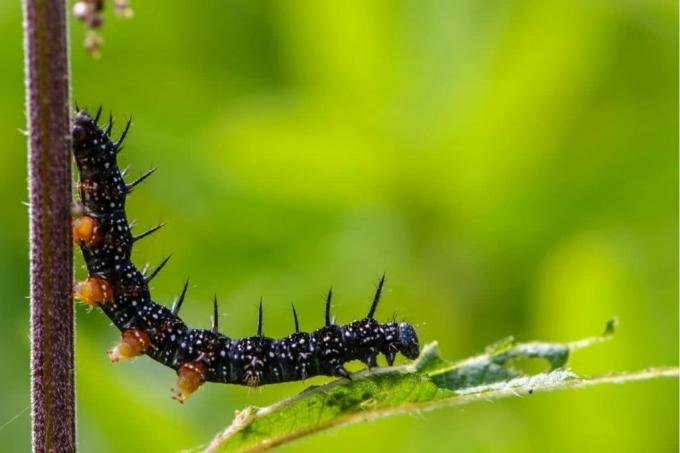
- Appearance: black with many branched thorns and small white spots
- Length: 40 to 50 millimeters
- Habitat: Central Europe, except in the north, as far as Japan in parks, gardens and open forests up to an altitude of 2500 meters
- Food: large nettle, hops, upright glass herb on the island of Samos
- the butterflies hatch from July of the following year
Willow Borer (Cossus cossus)

- Appearance: colored yellow on the underside, conspicuously dark red on the back, the head and nape of the neck are glossy black with isolated white hairs
- Length: 100 millimeters
- Habitat: Europe, North Africa and temperate zones of Asia on flowing waters with old willows, in parks and on meadows up to 1500 meters above sea level
- Lining: wood from white willow, apple trees, silver birch, pear, black alder and other deciduous trees
- the butterflies hatch in May 2 to 4 years later
Note: The caterpillars smell strongly of vinegar. This allows you to identify a strong caterpillar infestation on a tree.
frequently asked Questions
Basically, the infestation is not fatal to the tree, even if the infestation is severe. It can even sprout again after it has been scavenged. However, the yield is strongly influenced. A lower yield can also be expected in the following year.
The caterpillars of the oak processionary moth go in single file in groups of 20 to 30 specimens foraging. That is why they are called processionary moths.
Better not, as some species of caterpillar have stinging hairs that can cause allergies and asthma. If you want to collect caterpillars from infested plants in the garden, it is better to wear gloves.



